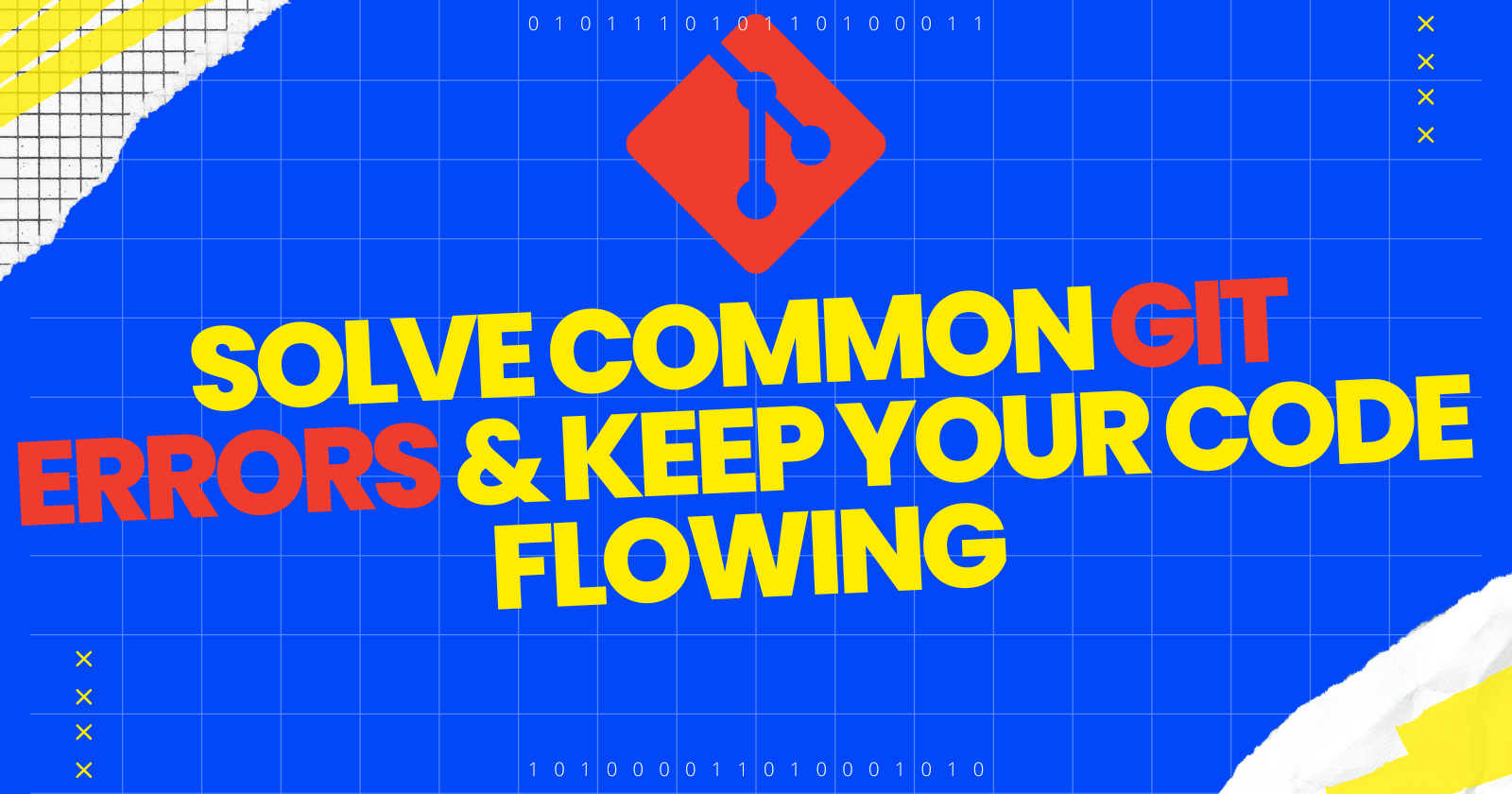Smooth Sailing with Git: Simple Solutions for Common Errors
 Muhammad Ali
Muhammad Ali
Git is a powerful version control system, but sometimes things can go wrong. From time to time, you may encounter various Git errors that can disrupt your workflow and slow down your progress.
In this blog, we will explore some of the most common Git errors and provide simple solutions to help you get back on track. Let's take a look at those errors:
Not a Git Repository
It is a common error that can occur when trying to use git commands in a directory that is not a git repository. This error message means that the current directory is not a valid git repository.
If you are trying to use a git command in a directory that is not yet a git repository, you can initialize a new git repository in that directory using the
git initcommand. This will create a new .git folder in the directory and allow you to use git commands in that directory.If you are sure that the directory you are in should be a git repository, double-check the directory path to ensure that you are in the correct directory. You can use the
lsordircommand to check the contents of the current directory and make sure that you are in the right place.If you are trying to use a git command in a directory that is not yet a git repository, but the directory should be a clone of an existing repository, you can use the
git clonecommand to clone the existing repository into the current directory. This will create a new directory with the name of the repository and initialize it as a git repository.
No branch specified
This error occurs when you try to push changes to a remote repository without specifying a branch.
If you want to switch to the
masterbranch, you can usegit checkout masterIf you want to create a new branch and switch to it, you can use
git checkout -b new-branchThis command creates a new branch called "new-branch" and switches to it.If you are trying to push changes to a specific branch, you can use
git push origin branch-nameThis command pushes your changes to the branch named "branch-name" on the remote repository.In general, it's important to always specify which branch you are working on within your Git commands to avoid the "no branch specified" error. If you're not sure which branch you're on or which branch you want to use, you can use the
git branchcommand to see a list of all branches and which one you're currently on.
Merge conflict
When working with Git, a common error that can occur is a merge conflict. This happens when two or more people make changes to the same file at the same time and Git is unable to automatically merge the changes.
To resolve a merge conflict, follow these steps:
Run
git statusto see which files have conflicts.Open the conflicted file in your text editor. Look for sections of the file that begin with
<<<<<<<,=======, and>>>>>>>. The lines between<<<<<<<and=======are the changes that you made. The lines between=======and>>>>>>>are the changes that someone else made.Edit the file to remove the conflict markers (
<<<<<<<,=======, and>>>>>>>) and make the necessary changes so that the file contains the desired final result.Save the changes to the file.
Run
git add <filename>to stage the changes.Run
git committo commit the changes to the repository.Finally, run
git pushto push the changes to the remote repository.
Remote branch not found
It's common to encounter the "remote branch not found" error. This error typically occurs when you try to pull or push changes to a remote branch that doesn't exist. Here's how to resolve this error:
Double-check that the remote branch you're trying to push or pull to exists. You can do this by running the
git branch -rcommand to see a list of all the remote branches in your repository.Before attempting to push or pull to a remote branch, it's always a good idea to fetch the latest changes from the remote repository using the
git fetchcommand. This ensures that your local repository is up to date and can help prevent errors.If you're still encountering the error, try explicitly specifying the remote branch you want to push or pull to in your Git command. For example, instead of running
git pull, you could rungit pull origin <branch-name>.If the remote branch doesn't exist, you can create it using the
git push --set-upstream origin <branch-name>command. This creates a new branch on the remote repository and sets the upstream branch for your local branch
Untracked files would be overwritten by checkout
The "Untracked files would be overwritten by checkout" error usually occurs when you have uncommitted changes in your working directory that conflict with the changes you are trying to pull from the remote repository. Here are the steps you can take to resolve this error:
Before checking out a different branch or version, it is important to commit any changes you have made in your current branch. This will ensure that your changes are saved and can be retrieved later if needed.
If you don't want to commit your changes, you can stash them before switching to a different branch. Use the
git stashcommand to save your changes and temporarily remove them from your working directory.Once your changes are either committed or stashed, you can try pulling the changes again using the
git pullcommand.If there are any conflicts between the changes you pulled and the changes you made, you will need to resolve them manually. Use the
git statuscommand to see which files have conflicts and edit them accordingly.
Could not resolve host
- Ensure that your internet connection is stable and working properly. If you are using a proxy server, check if the server is up and running.
- Make sure that you have entered the correct URL for the remote repository. Check if there are any typos in the URL.
- The error could be caused by an issue with the DNS server. Check if the DNS server is running correctly, and try to ping the remote repository's domain to see if the DNS can resolve it.
If none of the above solutions work, you may need to contact your network administrator or Git hosting provider for further assistance.
In Summary:
Understanding and resolving common Git errors is essential for efficient and effective version control. By following the solutions outlined in this blog post, you will be better equipped to handle these errors and keep your Git repository functioning smoothly. Remember to always carefully read error messages and documentation, and to seek help from the Git community & also Google. With a bit of patience and persistence, you can master Git and make the most of its powerful features. Happy coding!
Subscribe to my newsletter
Read articles from Muhammad Ali directly inside your inbox. Subscribe to the newsletter, and don't miss out.
Written by
